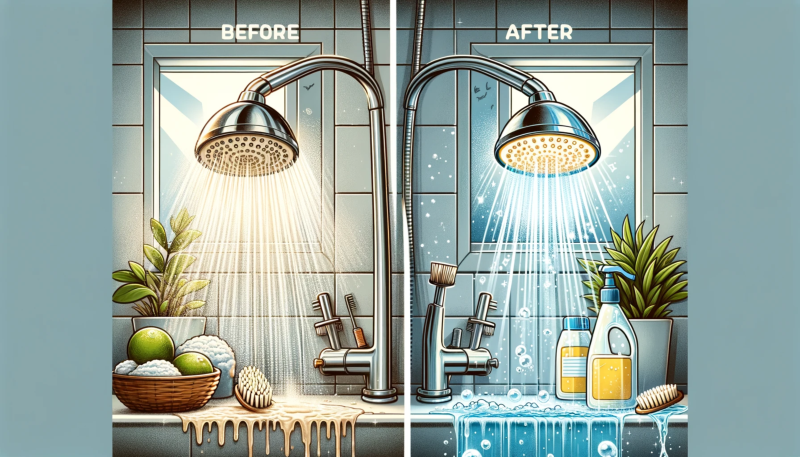When it comes to storing food, maintaining the right temperature in your refrigerator is crucial. The temperature not only affects the freshness and quality of your food but also plays a significant role in preventing the growth of harmful bacteria. Setting the perfect refrigerator temperature is a simple yet essential step in ensuring the longevity and safety of your food.
So, what is the perfect refrigerator temperature?
According to food safety guidelines, the ideal temperature for a refrigerator is between 34°F (1°C) and 40°F (4°C). This range helps to slow down the growth of bacteria, keeping your food fresh and safe to consume. Setting your refrigerator at a temperature below 32°F (0°C) can cause your food to freeze, while a temperature above 40°F (4°C) can lead to the growth of bacteria and spoilage.
But why is it important to maintain a consistent temperature?
A consistent temperature in your refrigerator ensures that your food stays at the right conditions for preservation. Fluctuating temperatures can cause food to spoil faster, as well as affect the taste and texture. It is recommended to use a refrigerator thermometer to monitor the temperature regularly and make necessary adjustments.
Additionally, different parts of your refrigerator may have different temperatures.
how long can raw chicken stay in the fridge
The door shelves are typically warmer than the rest of the refrigerator due to frequent opening and closing. Therefore, it is best to store non-perishable items like condiments and beverages in the door shelves, while reserving the colder areas for perishable items like meat, dairy products, and leftovers. By organizing your refrigerator in this way, you can ensure that each item is stored at the most appropriate temperature for its longevity.
In conclusion, setting the perfect refrigerator temperature is a simple yet important step in keeping your food fresh and safe. By maintaining a temperature range of 34°F (1°C) to 40°F (4°C) and regularly monitoring it, you can ensure that your food stays at its best quality for longer periods. Remember, a little attention to temperature can go a long way in preserving the freshness and taste of your food.
Understanding Refrigerator Temperature: Basics and Importance
When it comes to keeping your food fresh and safe to eat, understanding refrigerator temperature is crucial. The temperature inside your refrigerator plays a significant role in preserving the quality of your food and preventing the growth of harmful bacteria.
The recommended refrigerator temperature is between 35°F (1.7°C) and 38°F (3.3°C). This range is considered optimal for ensuring that your food stays fresh for a longer period. Keeping your refrigerator at a temperature below 35°F (1.7°C) can cause freezing, while temperatures above 38°F (3.3°C) may lead to food spoilage and bacterial growth.
By maintaining the ideal refrigerator temperature, you can extend the shelf life of your perishable items, such as fruits, vegetables, dairy products, and meats. It is also essential to store different types of food in their respective compartments. For example, fruits and vegetables should be stored in the crisper drawer, while raw meats should be kept on the lower shelves to prevent cross-contamination.
Regularly monitoring and adjusting the temperature of your refrigerator is crucial for maintaining food safety. Investing in a refrigerator thermometer can help you accurately measure the temperature inside your fridge. If you notice any significant fluctuations or inconsistencies in the temperature, it may be a sign of a faulty thermostat or cooling system that needs repair or replacement.
In addition to keeping your food fresh, the right refrigerator temperature can also save energy and reduce your electricity bills. When your refrigerator is set at the optimal temperature, it doesn't have to work as hard to cool the contents, resulting in energy savings.
In conclusion, understanding the basics and importance of refrigerator temperature is essential for preserving the quality and safety of your food. By maintaining the recommended temperature range, storing food correctly, and regularly monitoring your refrigerator's temperature, you can ensure that your food stays fresh, safe to eat, and minimize waste.
What is the importance of fridge temperature?
The temperature of your refrigerator is a crucial factor in ensuring the freshness and safety of your food. It plays a vital role in preserving the quality and longevity of perishable items, preventing the growth of harmful bacteria, and reducing the risk of foodborne illnesses.
Keeping your refrigerator at the correct temperature is essential for maintaining the optimal environment for food storage. The recommended temperature for a refrigerator is between 35°F (1.7°C) and 38°F (3.3°C). This temperature range helps to slow down the growth of bacteria and other microorganisms that can spoil your food.
When the fridge temperature is too high, bacteria can multiply rapidly, increasing the risk of food spoilage and contamination. On the other hand, if the temperature is too low, certain types of food, such as fruits and vegetables, may become damaged or lose their crispness.
By setting and maintaining the correct temperature in your refrigerator, you can ensure that your food stays fresh and safe to consume. It is also important to regularly check and monitor the temperature to make sure it remains within the recommended range.
In addition to temperature, proper organization and storage practices are also essential for maintaining food quality. This includes keeping raw meats separate from other items, covering and sealing food properly, and regularly cleaning and sanitizing your refrigerator.
By understanding the importance of fridge temperature and following best practices for food storage, you can help extend the shelf life of your food and reduce the risk of foodborne illnesses. So, make sure to keep an eye on your refrigerator temperature and keep it cool!
annual vs perennial
What is the basic temperature of a refrigerator?
The basic temperature of a refrigerator is typically set to around 37 to 40 degrees Fahrenheit (2.8 to 4.4 degrees Celsius). This temperature range is considered safe for storing perishable food items and helps to slow down the growth of bacteria.
It's important to note that different compartments within a refrigerator may have slightly different temperatures. The main refrigerator compartment is usually kept at the desired temperature range mentioned above, while the freezer compartment is typically set to 0 degrees Fahrenheit (-18 degrees Celsius) to keep frozen foods properly preserved.
However, it's worth mentioning that the ideal temperature for a refrigerator can vary depending on factors such as the type of food being stored, the overall condition of the refrigerator, and personal preferences. Some individuals may prefer to set their refrigerator slightly colder or warmer based on their specific needs.
To ensure that your refrigerator is maintaining the correct temperature, it's recommended to use a refrigerator thermometer. This can help you monitor the temperature and make any necessary adjustments to keep your food fresh and safe to consume.
Remember, maintaining the proper temperature in your refrigerator is crucial for food safety and to avoid spoilage. It's always a good idea to consult the manufacturer's guidelines or your refrigerator's user manual for specific temperature recommendations.
How does the temp work on a fridge?
Understanding how the temperature works in a refrigerator is crucial for keeping your food fresh and safe. The temperature in a fridge is regulated by a thermostat, which is typically located inside the appliance.
The thermostat measures the temperature inside the fridge and sends signals to the compressor, a motor that circulates refrigerant throughout the system. When the temperature rises above the set level, the compressor kicks in and starts cooling the air inside the fridge.
Refrigerators are typically set to a temperature range of 35 to 38 degrees Fahrenheit (2 to 3 degrees Celsius). This range is considered optimal for preserving the quality and safety of most types of food. However, it's important to note that different compartments in the fridge may have slightly different temperatures, with the lower shelves being slightly colder than the upper ones.
It's recommended to use a refrigerator thermometer to ensure that the temperature inside your fridge stays within the desired range. This will help you identify any potential issues and make adjustments if necessary.
Remember that opening the fridge frequently or leaving the door open for extended periods can affect the temperature inside. Additionally, placing hot or warm food directly into the fridge can also impact its overall temperature. It's best to allow food to cool down before placing it in the refrigerator.
By understanding how the temperature works in your fridge and taking the necessary precautions, you can ensure that your food stays fresh and safe for consumption.
Setting the Ideal Temperature for Your Refrigerator
When it comes to keeping your food fresh and safe to eat, setting the right temperature for your refrigerator is crucial. The ideal temperature for your refrigerator is between 35°F (1.6°C) and 38°F (3.3°C). This range is considered optimal for preventing bacterial growth and keeping your food at its best quality.
Setting your refrigerator to a lower temperature may seem like a good idea to keep your food colder, but it can actually have negative effects. Temperatures below 35°F (1.6°C) can cause your food to freeze, affecting its texture and taste. It can also lead to excessive energy consumption, as your refrigerator will have to work harder to maintain such low temperatures.
On the other hand, setting your refrigerator to a higher temperature can also be problematic. Temperatures above 38°F (3.3°C) can allow bacteria to grow more rapidly, putting your food at risk of spoilage and potential foodborne illnesses. It can also lead to faster deterioration of perishable items like fruits and vegetables.
To ensure that your refrigerator is set to the ideal temperature, use a refrigerator thermometer. Place it in the middle of the refrigerator, away from the walls and any food items. Check the thermometer regularly to make sure the temperature is within the recommended range.
short haircuts for women
Remember, the temperature inside your refrigerator may vary in different areas. The bottom shelves tend to be colder, while the door shelves are typically warmer. Store your most perishable items, like raw meat and dairy products, on the bottom shelves where it's coldest. Keep condiments and other less perishable items in the door shelves.
By setting the ideal temperature for your refrigerator and properly organizing its contents, you can ensure that your food stays fresh and safe to consume. Don't forget to regularly clean your refrigerator and dispose of any expired or spoiled items to maintain optimal food storage conditions.
What is the correct refrigerator temperature settings?
Setting the correct temperature for your refrigerator is crucial to ensure the freshness and safety of your food. The optimal temperature range for most refrigerators is between 35°F and 38°F (1.7°C and 3.3°C).
Keeping your refrigerator within this range helps to slow down the growth of bacteria and other microorganisms that can cause food spoilage. It also helps to maintain the quality and nutritional value of your food for a longer period of time.
It's important to note that different areas of the refrigerator may have slightly different temperatures. The back of the refrigerator tends to be colder, while the door shelves may be slightly warmer due to frequent opening and closing.
Here are some guidelines to help you set the correct temperature for different areas of your refrigerator:
- Freezer: The freezer temperature should be set between 0°F and 5°F (-17.8°C and -15°C). This is the ideal temperature for freezing and storing frozen foods.
- Refrigerator compartments: The main compartment of the refrigerator should be set between 35°F and 38°F (1.7°C and 3.3°C). This is the temperature range that promotes food safety and freshness.
- Crisper drawers: The crisper drawers are designed to maintain higher humidity levels to help keep fruits and vegetables fresh. The temperature in these drawers should be set slightly higher, around 40°F (4.4°C).
- Door shelves: The temperature in the door shelves may be slightly warmer, so it's best to store items that are less perishable in this area, such as condiments, beverages, and eggs.
Remember, it's important to regularly check and monitor the temperature of your refrigerator using a thermometer to ensure that it stays within the recommended range. Adjust the temperature settings accordingly if needed.
By setting the correct refrigerator temperature, you can ensure that your food stays fresh, safe, and of high quality for longer periods of time.
What is the ideal temperature for a fridge?
The ideal temperature for a fridge is between 35°F (1.6°C) and 38°F (3.3°C). Maintaining a consistent temperature within this range is crucial for keeping your food fresh and safe to eat.
Setting your fridge temperature too low can result in freezing certain items, such as fruits and vegetables, and may also cause liquids to expand and potentially burst their containers. On the other hand, if the temperature is too high, bacteria can grow more quickly, leading to food spoilage and potential foodborne illnesses.
To ensure that your fridge stays at the optimal temperature, it's important to regularly check the temperature using a refrigerator thermometer. Place the thermometer in the middle of the fridge, away from any direct contact with food or the door, as these areas can be slightly warmer or colder.
If you find that your fridge is consistently outside the recommended temperature range, you may need to adjust the thermostat or seek professional assistance to ensure proper cooling. Additionally, be mindful of the amount of food stored in your fridge, as overcrowding can impede airflow and affect temperature regulation.
| Refrigerator Zone | Ideal Temperature Range |
|---|---|
| Main Compartment | 35°F (1.6°C) to 38°F (3.3°C) |
| Freezer Compartment | 0°F (-18°C) to -10°F (-23°C) |
Remember, maintaining the ideal temperature in your fridge is essential for keeping your food fresh, safe, and free from spoilage. By monitoring the temperature and making any necessary adjustments, you can ensure that your fridge is functioning optimally and your food remains in the best condition possible.
Best Practices for Refrigerator Temperature Management
Proper temperature management is essential for maintaining the quality and safety of the food stored in your refrigerator. Here are some best practices to follow:
short haircuts for women
- Set the temperature to 37°F (3°C) for the refrigerator and 0°F (-18°C) for the freezer. These temperatures are considered ideal for keeping perishable foods fresh and preventing the growth of bacteria.
- Regularly check the temperature using a refrigerator thermometer. This will ensure that the temperature remains consistent and within the recommended range.
- Avoid overfilling the refrigerator. Proper air circulation is necessary for maintaining an even temperature throughout the unit. Overcrowding the refrigerator can lead to uneven cooling and potential food spoilage.
- Store raw meats and seafood on the lower shelves to prevent any potential cross-contamination. This will also help to contain any potential spills or leaks.
- Keep the refrigerator door closed as much as possible. Opening the door frequently can cause the temperature to rise, leading to increased energy consumption and potential food spoilage.
- Regularly clean and defrost the refrigerator to maintain its efficiency. A buildup of ice can interfere with the cooling process and cause the appliance to work harder.
- Consider the location of your refrigerator. Keep it away from direct sunlight, heat sources, and areas with high humidity. Excessive heat and humidity can affect the performance of the refrigerator.
By following these best practices for refrigerator temperature management, you can ensure that your food stays fresh and safe for consumption. Remember to regularly monitor the temperature and make adjustments as needed to maintain optimal conditions.
What is the best temperature setting for a refrigerator?
Finding the perfect temperature setting for your refrigerator is essential to keeping your food fresh and safe to consume. The ideal temperature range for a refrigerator is between 35°F (1.7°C) and 38°F (3.3°C).
Setting your refrigerator to this temperature range helps to slow down the growth of bacteria, which can cause food spoilage and lead to foodborne illnesses. It also helps to maintain the freshness and flavor of your food, as well as extend its shelf life.
It's important to note that different areas of your refrigerator may have slightly different temperatures. The back of the refrigerator tends to be colder, while the door shelves are generally warmer. To ensure even cooling, it's recommended to store perishable items, such as meat and dairy products, towards the back of the refrigerator where it is colder.
It's also worth mentioning that the temperature of your refrigerator can be affected by factors such as the number of items stored inside, the frequency of door openings, and the ambient temperature of the room. To maintain the optimal temperature, it's important to avoid overloading your refrigerator, minimize door openings, and keep your refrigerator away from direct sunlight or heat sources.
By setting your refrigerator to the ideal temperature range and following these tips, you can ensure that your food stays fresh and safe for consumption, helping you to minimize food waste and maintain a healthy kitchen environment.
How do I regulate the temperature of my refrigerator?
Regulating the temperature of your refrigerator is essential for keeping your food fresh and safe to eat. Here are some steps you can take to ensure your refrigerator is set at the perfect temperature:
1. Check the manufacturer's recommendations: Start by consulting your refrigerator's user manual or the manufacturer's website for the recommended temperature range. This information can usually be found in the troubleshooting or maintenance section.
2. Use a thermometer: Invest in a refrigerator thermometer to accurately monitor the temperature inside your fridge. Place it in the middle or towards the back of the refrigerator to get an accurate reading.
3. Adjust the temperature control dial: Most refrigerators have a temperature control dial located inside the fridge. It is usually labeled from 1 to 9 or from cold to coldest. Turn the dial to a higher number or towards 'coldest' to lower the temperature, and vice versa to raise the temperature.
4. Monitor the temperature regularly: After adjusting the temperature, give your refrigerator some time to reach the desired temperature. Check the thermometer regularly to ensure it is within the recommended range. If not, make further adjustments as needed.
5. Consider the location of your fridge: The room temperature and the location of your refrigerator can affect its cooling efficiency. Make sure your fridge is placed away from direct sunlight, heat sources, and other appliances that generate heat.
6. Keep the fridge well-stocked: A well-stocked fridge helps maintain a more stable temperature. If your refrigerator is often empty, consider using water-filled containers or ice packs to fill up the empty space, as this helps regulate the temperature more effectively.
7. Clean the condenser coils: Over time, dust and debris can accumulate on the condenser coils, affecting the refrigerator's cooling performance. Regularly clean the coils using a vacuum cleaner or a soft brush to improve efficiency.
8. Avoid overloading: Do not overload your refrigerator with too much food, as this can obstruct airflow and prevent the cold air from circulating properly. Allow space for air to flow freely and ensure that the vents are not blocked.
9. Be mindful of the weather: During hot summer months or in humid climates, you may need to lower the temperature slightly to compensate for the warmer surroundings. Monitor the temperature closely and adjust as necessary.
10. Seek professional help if needed: If you've tried all the above steps and are still having trouble regulating the temperature of your refrigerator, it may be time to call a professional technician. They can diagnose and fix any underlying issues that could be affecting the fridge's cooling performance.
By following these steps, you can ensure that your refrigerator is set at the perfect temperature to keep your food fresh and safe for consumption.
Q&A:
What is the ideal temperature for a refrigerator?
The ideal temperature for a refrigerator is between 35 to 38 degrees Fahrenheit (2 to 3 degrees Celsius).
blonde highlights
Why is it important to set the right temperature for a refrigerator?
Setting the right temperature for a refrigerator is important because it helps to keep food fresh and prevent the growth of bacteria. A too warm temperature can cause food to spoil quickly, while a too cold temperature can freeze food and affect its quality.
How can I check the temperature of my refrigerator?
You can check the temperature of your refrigerator by using a refrigerator thermometer. Place the thermometer in a glass of water and leave it in the refrigerator for a few hours. Then, check the temperature reading on the thermometer.
Can the temperature of a refrigerator affect energy consumption?
Yes, the temperature of a refrigerator can affect energy consumption. A refrigerator that is set too cold will use more energy to maintain that temperature. It is recommended to set the temperature within the recommended range to optimize energy efficiency.
What should I do if my refrigerator is not cooling properly?
If your refrigerator is not cooling properly, there are a few things you can try. First, make sure that the temperature is set correctly. If it is, check the condenser coils to see if they are dirty and need cleaning. You should also check the door seals to ensure they are not damaged and are creating a proper seal. If these steps do not solve the issue, it may be best to call a professional for repairs.
What is the ideal temperature for a refrigerator?
The ideal temperature for a refrigerator is between 35°F (1.6°C) and 38°F (3.3°C).





